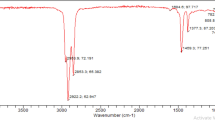Abstract
Biodiesel derived from camelina as well as other feedstocks including palm, mustard, coconut, sunflower, soybean and canola were prepared via the conventional base-catalyzed transesterification with methanol. Fatty acid profiles and the fuel properties of biodiesel from different vegetable oils were analyzed and tested in accordance with ASTM D6751. Camelina biodiesel contains 10–12%, 37–40%, and 48–50% saturated, monounsaturated and polyunsaturated components, respectively. Some fuel properties of camelina biodiesel are comparable to that of sunflower biodiesel including kinematic viscosity (40 °C), flash point, cloud point, cold filter plugging point, and oil stability index. However, camelina biodiesel exhibited the poorest oxidative stability, highest distillation temperature and has the highest potential to form coke during combustion, all of which are attributed to the high amounts of n-3-fatty acids in camelina oil. While neat camelina biodiesel may exhibit undesirable fuel properties, it is very comparable with soybean biodiesel at the B20 level.


Similar content being viewed by others
References
Yusuf NNAN, Kamarudin SK, Yaakub Z (2011) Overview on the current trends in biodiesel production. Energy Convers Manage 52:2741–2751
Canakci M, Sanli H (2008) Biodiesel production from various feedstocks and their effects on the fuel properties. J Ind Microbiol Biotechnol 35:431–441
Karmakar A, Karmakar S, Mukherjee S (2010) Properties of various plants and animal feedstocks for biodiesel production. Bioresourc Technol 101:7201–7210
Moser BR, Vaughn SF (2010) Evaluation of alkyl esters from Camelina sativa oil as biodiesel and as blend components in ultra low-sulfur diesel fuel. Bioresourc Technol 101:646–653
Lopez DE, Mullins JC, Bruce DA (2010) Energy life cycle assessment for the production of biodiesel from rendered lipids in the United States. Ind Eng Chem Res 49:2419–2432
Gui MM, Lee KT, Bhatia S (2008) Feasibility of edible oil vs. non-edible oil vs. waste edible oil as biodiesel feedstock. Energy 33:1646–1653
Rashid U, Anwar F, Moser BR, Knothe G (2008) Moringa oleifera oil: a possible source of biodiesel. Bioresourc Technol 99:8175–8179
Nakpong P, Wootthikanokkhan S (2010) Roselle (Hibiscus sabdariffa L.) oil as an alternative feedstock for biodiesel production in Thailand. Fuel 89:1806–1811
Schinas P, Karavalakis G, Davaris C, Anastopoulos G, Karonis D, Zannikos F, Stournas S, Lois E (2009) Pumpkin (Cucurbita pepo L.) seed oil as an alternative feedstock for the production of biodiesel in Greece. Biomass Bioenergy 33:44–49
Yusup S, Khan M (2010) Basic properties of crude rubber seed oil and crude palm oil blend as a potential feedstock for biodiesel production with enhanced cold flow characteristics. Biomass Bioenergy 34:1523–1526
Frohlich A, Rice B (2005) Evaluation of Camelina sativa oil as a feedstock for biodiesel production. Ind Crop Prod 21:25–31
Moser B (2009) Biodiesel production, properties, and feedstocks. In Vitro Cell Dev Biol—Plant 45:229–266
Knothe G, Steidley KR (2005) Kinematic viscosity of biodiesel fuel components and related compounds. Influence of compound structure and comparison to petrodiesel fuel components. Fuel 84:1059–1065
Soriano NU Jr, Migo VP, Sato K, Matsumura M (2005) Crystallization behavior of neat biodiesel and biodiesel treated with ozonized vegetable oil. Eur.J. Lipid Sci. Technol 107:689–696
Schuster A, Friedt W (1998) Glucosinolate content and composition as parameters of quality of Camelina seed. Ind Crops Prod 7:297–302
Knothe G (2005) Dependence of biodiesel fuel properties on the structure of fatty acid alkyl esters. Fuel Process.Technol 86:1059–1070
Dunn RO (2009) Effects of minor constituents on cold flow properties and performance of biodiesel. Prog. Energy Combust. Sci. 35:481–489
Soriano NU Jr, Migo VP, Matsumura M (2006) Ozonized vegetable oil as pour point depressant for neat biodiesel. Fuel 85:25–31
Jain S, Sharma MP (2011) Thermal stability of biodiesel and its blends: a review. Renew Sust En Rev 15:438–448
Acknowledgments
The authors are grateful to Earl Fisher Biofuels, LLC located in Chester, MT for conducting the fatty acid profile analyses of all the biodiesel samples.
Author information
Authors and Affiliations
Corresponding author
About this article
Cite this article
Soriano, N.U., Narani, A. Evaluation of Biodiesel Derived from Camelina sativa Oil. J Am Oil Chem Soc 89, 917–923 (2012). https://doi.org/10.1007/s11746-011-1970-1
Received:
Revised:
Accepted:
Published:
Issue Date:
DOI: https://doi.org/10.1007/s11746-011-1970-1




